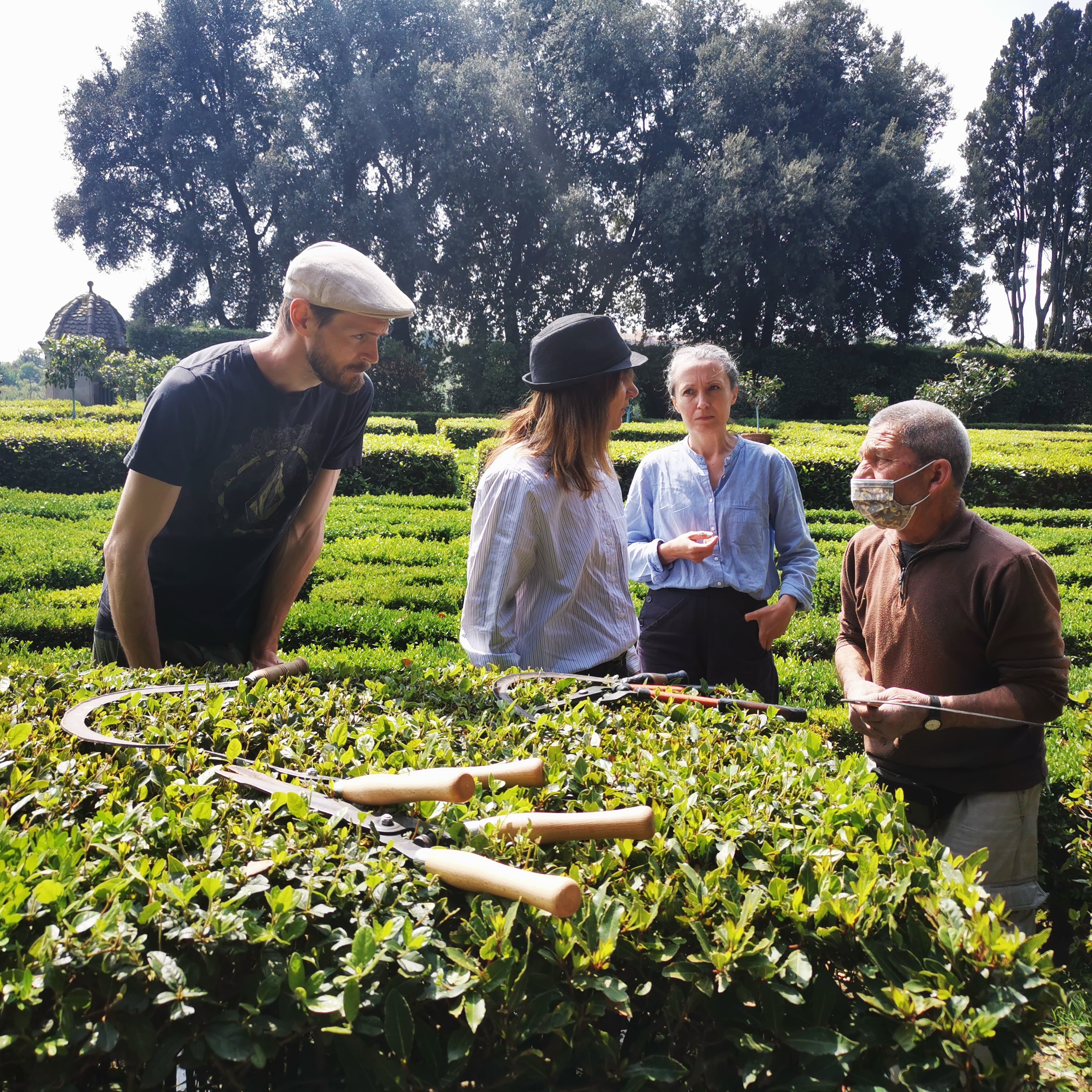Cutting a box hedge with a sickle
An intangible cultural heritage
DOI:
https://doi.org/10.7577/formakademisk.5443Emneord (Nøkkelord):
intangible cultural heritage, craft, clipping box hedge, historic gardens, heritage gardeningSammendrag
United Nations Educational, Scientific and Cultural Organization (UNESCO) has identified craft as an intangible cultural heritage in the Convention for the Safeguarding of the Intangible Cultural Heritage. The nature of this cultural heritage is that it must be practiced by living craftspeople to endure, and when it is performed by very few, it can be seen as endangered. This research, funded by the Carl-Göran Adelswärds Foundation, is a documentation of such a craft: cutting a box hedge with a sickle. At the same time, in this study, a master–apprentice situation was staged in order to safeguard this traditional craft and pass it on to new craftspeople. The core elements of this learning procedure are imitation and feedback. This specific craft is an ancient tradition with very few living practitioners. The garden in which this endangered craft is still practiced is Castello Ruspoli, created in 1611, when sickles where still used for cutting box hedge hedges. Thanks to the restoration and preservation by the current owners, it is one of the most well-preserved gardens from that time. One of the reasons this garden is so special is the way it is cared for by the gardener, Santino Garbuglia, using traditional craft methods that this film article will investigate and show. The author argues that some traditional gardening methods should be considered intangible cultural heritages and safeguarded as such.
Referanser
Castello Ruspoli. (2023). The castle. https://castelloruspoli.com/en/the-castle/
Dewey, J. (2015). Att göra en erfarenhet [Having an Experience]. In J. Hjertström Lappalainen (Ed.), Klassiska texter om praktisk kunskap (pp. 63–94). Södertörns Högskola. (Original work published 1934)
Fernström, P., Dahlberg, M., Sirviö, E.-L., & Lahti, H. (2021). Crafting short films. Biennial International Conference for the Craft Sciences. (2021). Version 1. https://biccs.dh.gu.se/2021/9/1
Fjäderhane, A. M., & Arvidsson, L. (1963). Arbetsstudier i trädgårdsodlingen. Alnarp.
Groth, C. (2017). Making Sense Through Hands. Design and Craft Practice Analysed as Embodied Cognition [Doctoral dissertation, Aalto University]. Helsinki. https://aaltodoc.aalto.fi/handle/123456789/24839
Ho, W.-G. (2021). Three observations on filming tactility and movement in crafts-based practice: A preliminary investigation. FormAkademisk, 14(2). https://doi.org/10.7577/formakademisk.4407
Ingold, T. (2000). The perception of the environment: Essays on livelihood, dwelling and skill. Routledge.
Karling, S. (1970). Drottning Christinas franske trädgårdsmästare. Uppsala.
Lundström, A. (1833). Handbok i trädgårds-skötseln (2. uppl.). G. Scheutz.
Müller, D. (1857). Skogsvännen: anvisning att till skog uppodla ofruktbar mark, förbättra glesa skogar, plantera alléer, häckar m.m.: Till motverkande af den hotande vedbristen, till klimatets förbättring och landets försköning. Bonnier.
Schön, D. A. (1983). The reflective practitioner: How professionals think in action. Basic Books.
Seiler, J. (2020). Management regimes for lawns and hedges in historic gardens [PhD dissertation, Gotheburg University). Gupea. http://hdl.handle.net/2077/62813
Seiler, J., Eriksson, L., Westerlund, T., & Almevik, G. (2021). Ways of tacit knowing: A film article. FormAkademisk, 14(2). https://doi.org/10.7577/formakademisk.4406
UNESCO. (2003). Purpose of the lists. https://ich.unesco.org/en/purpose-of-the-lists-00807
UNESCO. (2023a). What is intangible heritage. https://ich.unesco.org/en/what-is-intangible-heritage-00003
UNESCO. (2023b). Traditional craftsmanship. https://ich.unesco.org/en/traditional-craftsmanship-00057
Wimmer, C. A. (2012). Hippe, Krail und Rasenpatsche: Zur Geschichte der Gartengeräte. VDG Weimar.

Nedlastinger
Publisert
Hvordan referere
Utgave
Seksjon
Lisens
Opphavsrett 2023 Joakim Seiler

Dette verket er lisensiert under Creative Commons Attribution-NoDerivatives 4.0 International License.
- Forfatteren(e) beholder sin opphavs- og kopieringsrett til eget manuskript, men gir tidsskriftet varig rett til 1) å fremføre manuskriptet for offentligheten i den opprinnelig publiserte digitale form, og 2) å registreres og siteres som første publisering av manuskriptet.
- Forfatteren må selv forvalte sine økonomiske kopieringsrettigheter overfor eventuell tredjepart.
- Tidsskriftet gir ingen økonomisk eller annen kompensasjon for innsendte bidrag, medmindre det er gjort særskilt avtale om dette med forfatteren(e).
- Tidsskriftet plikter å arkivere manuskriptet (inklusive metadata) i den opprinnelig publiserte digitale form, i minst ett dertil egnet åpent tilgjengelig langtidsarkiv for digitalt materiell, som for eksempel i de norske universitetenes institusjonsarkiv innen rammen av NORA-samarbeidet.
Verket vil bli publisert OpenAccess med en Creative Commons 4.0-lisens som tillater alle å lese, dele og tilpasse innholdet, også kommersielt, under lisensvilkårene:
Dette verket må tilskrives/ krediteres på riktig måte, en lenke må gis til CC-BY 4.0-lisensen, og endringer som er gjort må angis på en rimelig måte, men ikke på noen måte som antyder at lisensgiveren støtter deg eller din bruk.



